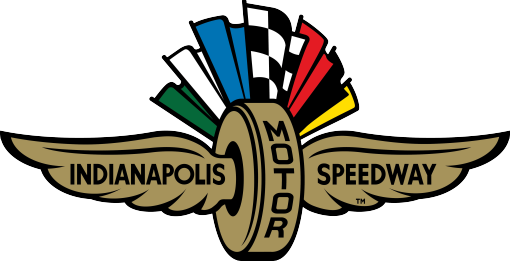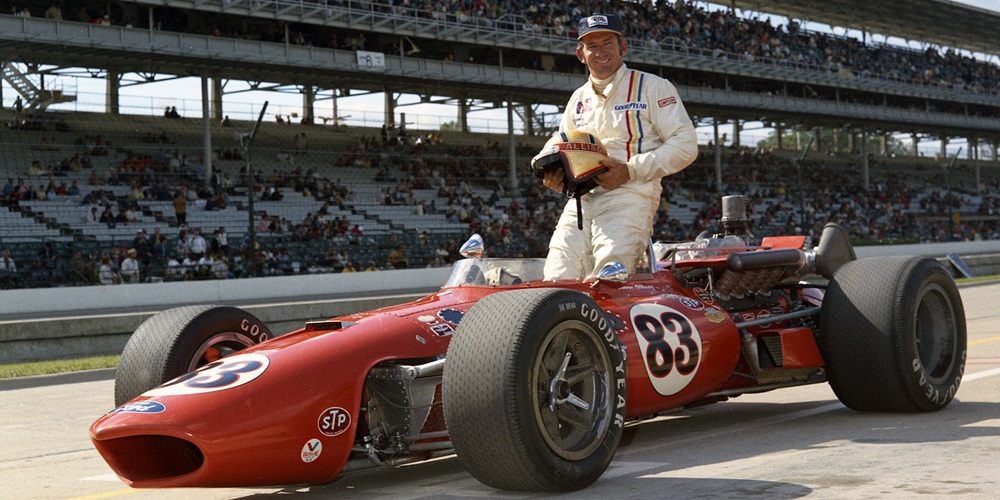There was a glorious period for racing fans and participants during the 1960s and '70s when it seemed as if the leading drivers of the world were at liberty to compete in any major event they wanted, regardless of sanctioning body or type.
It was not at all unusual, for instance, to see a driver compete in the Indianapolis 500, the Daytona 500, the 12 Hours of Sebring, the 24 Hours of Le Mans and perhaps even the Grand Prix of the United States at Watkins Glen – all in the same year.
Just as Indianapolis 500 veterans would make the annual pilgrimage to Daytona in February, there would be a variety of NASCAR standouts heading north to Indianapolis in May to try their hands alongside the stars of USAC, Formula One and the various road-racing disciplines.
Of all the NASCAR drivers who gave it a shot – Cale Yarborough, Bobby Johns, Marshall Teague, Paul Goldsmith and Lee Roy Yarbrough each drove in the "500," while Curtis Turner, Junior Johnson and Neil Bonnett are among the others who ran practice laps in May—the one who scored the highest finish among the visitors, and his colleague, who was the only one to actually lead a lap, just happened to be brothers.
They were the Hueytown, Alabama, duo of Bobby and Donnie Allison. Donnie finished fourth and won the Rookie of the Year award for A.J. Foyt in 1970, and Bobby led Lap 24 for Roger Penske in 1975.
"I'd wanted to drive in the '500' ever since I was a boy," said Donnie, who backed up his 1970 run with a sixth-place finish the next year, also for Foyt. "A.J. and I were both Ford drivers (Foyt would run several NASCAR events each year), and we became good friends. I actually started talking with him in 1969, telling him I wanted to do it.
"Finally, at Daytona in February of 1970, he said, 'Well, why don't you come to the shop sometime, and we'll put you in one so you can see how it feels?'"
Said Foyt: "Yes, he'd been talking with me about it for a while. He was a hell of a racer, and we'd become great friends."
Donnie traveled to Houston at his earliest opportunity, nestled into the cockpit of a modified 1967 Gurney Eagle, liked the feel of it and almost immediately began working alongside Tony Foyt (A.J.'s father) on getting it ready for Indianapolis.
With Wally Meskowski as chief mechanic, Donnie breezed through the mandatory rookie test in early May but then experienced a setback before being able to qualify.
"I told him it was gonna happen," Foyt said. "He wanted to run a different nose cone with a trick spoiler on it and I said: 'Don't do it. You'll spin and hit the wall.' So he goes out there, spins and hits the wall. We gave him a hard time over that."
Donnie ran the race like a veteran, starting 23rd and making his way into the top 10 by the 80-lap mark. He was sixth by Lap 140 and was running fifth with just a handful of laps to go when none other than his own boss, Foyt, ran into late-race transmission problems. After having run second to Al Unser for almost 300 miles, Foyt began to fall back and finally out with just five laps remaining, elevating Donnie to fourth.
Of the four Foyt cars in that race (Jimmy McElreath and George Snider were in the other two), Donnie had the highest finish.
"I'd been right up there running with Mario Andretti and Bobby Unser at the end," Donnie said. "And back in the garage after it was over, A.J. Watson came by. I'll never forget that."
Donnie qualified again in 1971, but not without some trials and tribulations. After it was decided his original qualifying run in a modified 1969 Coyote was not going to hold up, Foyt elected to pull the time and send Donnie out to qualify in his own backup, a virtual twin sister to Foyt's markedly different '71 Coyote that very few in the garage area even knew existed.
After starting 20th with the new car, Donnie drove another steady race to finish sixth.
No sooner was it over than Donnie flew to Charlotte, North Carolina, for the following day's World 600, where, apparently none the worse for the wear, he single-handedly piloted a Wood Brothers Mercury to second in the 600-mile marathon, beaten only by brother Bobby. Then, in an extraordinary gesture, he flew back to Indianapolis for that evening's victory banquet.
But that was it as far as the "500" was concerned.
"I knew A.J. was trying to win his fourth (Indianapolis 500)," Donnie said. "And so I said, 'Why don't you just concentrate on that and run one car, and I'll go for the championship.' Well, I did talk with a couple of other owners, and Wally Meskowski was trying to get me a ride. But it ended up we never did anything, and in fact, I never even went back to Indianapolis in May again until this year (2011) for the reunion."
Donnie Allison attended the Brickyard 400 on a regular basis, especially during the years when Hut Stricklin was participating since Stricklin is Donnie's son-in-law. And the friendship with Foyt continued.
"He was into show horses," Foyt said with a laugh, "and I bought one off him."
Toward the end of the 1972 season, Bobby Allison was at the road course in Riverside to test a Pete Brock Datsun.
"While I was there," he said, "I had a chance to drive a Don Nichols UOP Shadow Can–Am car, and I was getting around pretty quick. Roger Penske was there, and he said, 'Hey, you ought to test an Indy car.' So not long after that, I went to Ontario Motor Speedway to run one.
“I would have to say that Indianapolis had never been on my radar screen (unlike Donnie), and my focus was pretty much on what I had been doing. So everyone was pretty surprised when I started to run so fast (191 mph) and, in fact, some of the crew guys didn't believe me when I told them I had never driven one before."
It wasn't long before Bobby was named to Penske's stable for the 1973 "500," his most diversified teammates being defending winner Mark Donohue, a road-racing specialist, and Gary Bettenhausen, an oval warrior of the first order.
On paper, it appeared as if Bobby was a shoo-in for Rookie of the Year honors, but his debut was far from a pleasant experience.
This being the second year for the huge bolt-on rear wings, recent lap speeds had skyrocketed. No sooner had practice begun on the first day of qualifications than Art Pollard was involved in a massive single-car accident, the injuries from which he would not survive.
Later that day, Bobby was able to qualify, nailing down 12th spot with the fastest speed ever by a rookie. At 192.308 mph (and a single lap of almost 193), he was more than 20 mph faster than Donnie's best of only two years before.
No one who was there or involved in any way really cares to talk much about the rain-delayed and accident-marred 1973 "500." Suffice to say that when the event finally got underway after three days of frustration, Bobby Allison's run was over almost before it began. He was attempting to complete his very first lap when a connecting rod let go on his turbocharged Offy/McLaren, blinding everybody behind him with clouds of billowing white smoke and forcing him to pull into the infield grass.
Later in the day, there was a major accident involving Swede Savage which was to result, a month later, in Swede's passing.
"Judy (Bobby's wife) and I were friends with Swede and his wife," Bobby Allison said. "I knew Art Pollard, too, but with Swede, well, we were personal friends, so my thinking at the time was that I wouldn't be back."
And in 1974, he was not.
But one thing led to another and in 1975, Bobby was on the entry list, partnered at Penske with Tom Sneva.
After qualifying 13th, Bobby spent virtually the entire first half of the race within the top 10, running sixth at both the 40-lap and 50-lap distances and, during pit stop shuffles on Lap 24, enjoying a history-making lap as the race leader.
"We had a problem,” Bobby Allison said. “We'd broken a fuel coupler on a stop, and it was spraying a little fuel. I was running less than full throttle, and believe me I'd taken note of where every fire truck was parked on the infield!"
Over an hour later, he was still holding down eighth when a gearbox failure sidelined him after 112 laps.
Sadly, the typical racing "box score" does not reflect how strong a driver may have run during the course of a race but only where he or she started and finished. Thus the 1975 "500" box score merely shows that Bobby Allison started 13th and finished 25th. It fails to indicate that for almost two hours, he was running solidly within the top 10.




